Re-Editions: Between Zeitgeist and Timelessness
...Take Jil Sander, for example, who teamed up with Thonet to give Marcel Breuer's famous cantilever chair an elegant new look – celebrated above all in Milan...


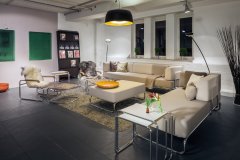
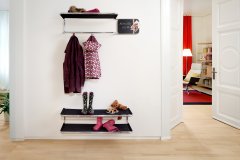




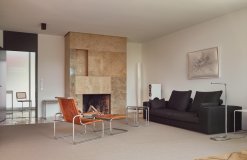

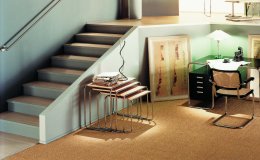

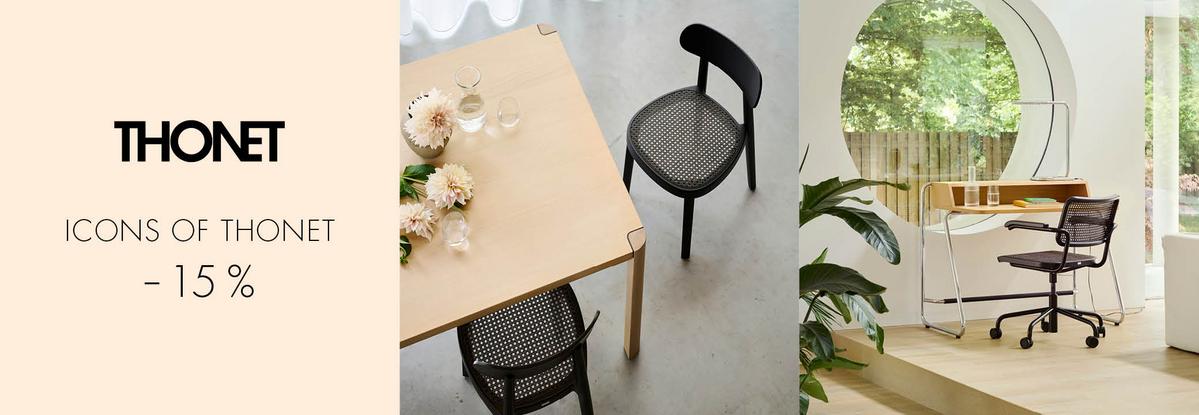
For over two centuries, Thonet has been shaping modern furniture design with timeless forms and masterful craftsmanship. Discover the variety of bentwood to tubular steel and secure a 15% discount on the entire Thonet range* – valid until 31 March 2026.
*The JS . Thonet collection is excluded
Not found what you were looking for?
We can deliver all products from this manufacturer. Please contact us at +49 341 22228822
or service@smow.com to discuss your specific product request.

The Thonet company can look back on a unrivalled tradition spanning over 200 years. With the bentwood process Thonet revolutionised the production of chairs and armchairs in the 19th century, a period that saw the genesis of one of the most famous Thonet classics: the Coffee House chair No. 14, designed more than 150 years ago by Michael Thonet and available today as the Thonet 214 / 214 M. At the beginning of the 20th century the company achieved a new fame and renown on account of its collaboration with Bauhaus architects such as Marcel Breuer.
To this day Thonet chairs and tables are design icons, some of which are still made by hand based on the original designs. Contemporary furniture designs such as the chair 118 / 118 M by designer Sebastian Herkner complete Thonet's portfolio.
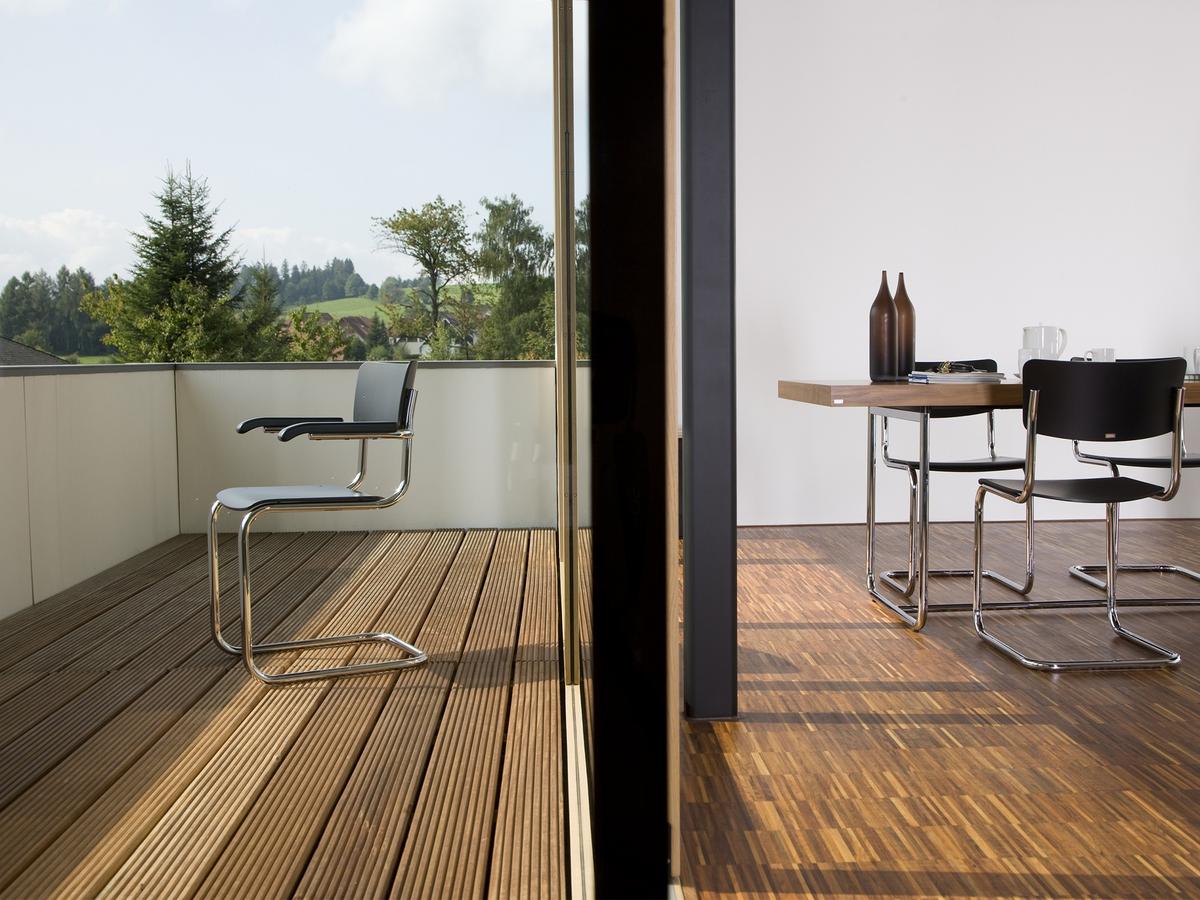
The S 43 Classic looks just as contemporary today as it did when it was developed almost 100 years ago
► THE HISTORY OF THE THONET COMPANY SINCE THE 19TH CENTURY
► THONET CLASSICS - AN OVERVIEW OF THE MOST IMPORTANT THONET FURNITURE DESIGNS
► THONET AND SUSTAINABILITY
► THE MOST IMPORTANT THONET DESIGNERS
► FURNISHING SPACES WITH THONET
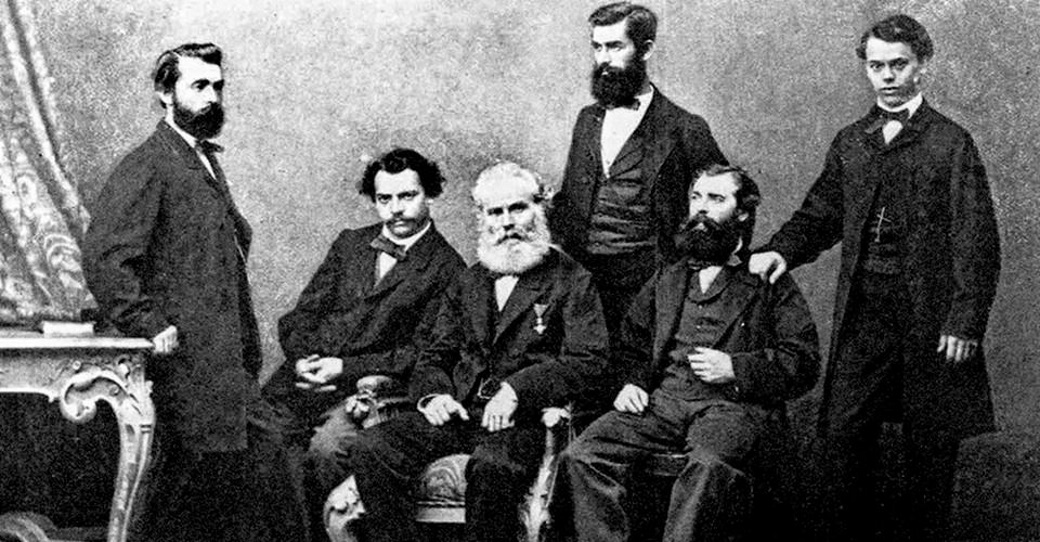
The Thonet family
The history of the Thonet furniture company goes back to 1819 when the German master carpenter Michael Thonet founded a workshop in Boppard am Rhein and quickly established a reputation for the quality of his furniture. In 1842 he moved his family and company to Vienna where, a decade later, he transferred management of the company to his sons - the birth of the iconic "Gebrüder Thonet".
At the end of the 19th century the Thonet furniture company expanded worldwide - founded and bought numerous factories, branch offices and sawmills in Germany, Austria and Eastern Europe, before, in the wake of the First World War, Thonet found itself in a precarious economic situation as a consequence of the collapse of the Habsburg monarchy. However, under the leadership of the Jewish businessman Leopold Pilzer, Thonet was able to cooperate with several Berlin factories which were entrusted with the production of Modernist tubular steel furniture: a resounding success. But unfortunately short-lived. During the period of National Socialism, the factories were expropriated, the company was broken up and the sales headquarters on Stephansplatz in Vienna were destroyed. Pilzer himself had to flee.
In 1938 the Thonet family bought back the shares in Thonet Mundus AG, but it was not until the 1950s that the company was in a position to once again take up production. With the appointment of Claus Thonet as a board member the fifth generation of the family finally joined the company management in 1972. From 197 the Austrian and German parts of the company continued to operate independently. Today Peter Thonet runs the family business which was renamed from "Gebrüder Thonet" to "Thonet GmbH" in 2006.
The first bentwood chairs were developed by Thonet founder Michael Thonet in the mid-19th century with the aid of a process which employs steam and pressure to make the wood malleable and formable. In 1852 Thonet acquired a patent for his process, a patent which laid the foundation for the rise of his company. Iconic designs such as the classic Coffee House chair No. 14 and the Thonet 209/210 still define the appearance of restaurants and cafés worldwide today.
Browse the brochure! To download, simply click the image on the left and explore the history of Thonet bentwood furniture. There is a lot to discover...
Thonet's legendary cantilever chairs arose during the 1920s, and amongst the most important protagonists one finds the Bauhaus student Marcel Breuer who was responsible for the chairs S 32 and S 64, amongst others, and the Dutch architect Mart Stam who designed the iconic Thonet cantilever chair S 43. Today, as then, the originals are produced exclusively by Thonet and have become an integral part of Bauhaus-related furnishings.
Browse the brochure! To download, simply click the image on the left and explore the history of Thonet tubular steel furniture. There is a lot to discover...
Thonet S 32
This iconic cantilever chair was designed by Marcel Breuer in the late 1920s during his time at Bauhaus Dessau, and was amongst the first of its kind. Curved tubular steel, a novel material at the beginning of the 1930s, meets the classic Thonet materials wood and wicker work. The S 32, and the S 64, variant with armrests became symbols of the transition to modernity in the 20th century. Today the S 32 is a truly timeless classic and the best-selling cantilever chair in design history.
Thonet 214
Chair 214, also known as Viennese Coffee House Chair No. 14, was designed by Michael Thonet. As one of the first series-produced bentwood chairs it laid the foundation for modern industrial furniture production, and with an estimated 50 million units sold worldwide by 1930 alone, the 214 is considered the best-selling chair in the world. In contrast to the 214, which has a cane seat, the 214 M has a plywood recessed seat.
Thonet S 533
This classic tubular steel cantilever chair was designed by the architect Ludwig Mies van der Rohe and the designer Lilly Reich. Lilly Reich authored the characteristic basket weave of the S 533, which was first presented in 1927 at the “Die Wohnung” exhibition at the Weissenhofsiedlung in Stuttgart. In classic Thonet style, craftsmanship and modern elegance come together as one.
Thonet S 285
The S 285 desk from 1935, designed by Marcel Breuer, is a further outstanding example of Thonet's use of bent tubular steel. With its slim profile, the characteristic lines of the tubular steel frame and the minimalist wooden shelves and storage elements the S 285 desk is an unmistakable icon of modernist design.
Thonet S 43
Designer Mart Stam achieved the greatest possible reduction in the cantilever chair S 43 by combining the tubular steel frame with moulded wooden parts for the seat and back. Its pure, reserved shape makes this cantilever chair an exemplary design in the spirit of modernity. The artistic copyright for the strictly cubic chair without rear legs is now held by Thonet.
Michael Thonet named his first chair: No. 1. Since then all Thonet chairs (with exceptions) have been numbered consecutively. The prefixes in turn provide information about the respective material.
Chairs without a prefix are usually made of wood, such as the bentwood chair 214/214 M, which used to be called No. 14. The S on the S 32 and the S 64 stands for steel/steel tube.
The suffixes also designate the respective variants: The F in the S 43 F stands for armchair (derived from the French fauteuil) and the M in the 214 M stands for plywood trough seat. The S 32 by Marcel Breuer, in the S 32 N version, features a seat composed of mesh rather than the classic cane mesh.
Thonet has committed itself to ensuring that profit-oriented growth must go hand in hand with environmental protection, ecologically responsible action and social justice. To this end the company today operates in a holistically sustainable manner and with social prudence at all levels.
Thonet furniture has always been characterised by excellent quality and extreme longevity. On the one hand this applies to the timeless design of Thonet furniture, which has lost none of its relevance since its creation, and on the other on the high quality of the materials and production. Today Thonet furniture has no negative impact on the environment, neither during production nor during its disposal.
Especially with a view to the future, sustainability is a core component in all of Thonet's corporate decisions. New product concepts in particular are therefore carefully tested for recyclability, sustainability and environmental friendliness of the materials. The company now sources 100 percent of its electricity from sustainable energy sources. In order to make a further contribution to reducing the ecological footprint, Thonet has also invested in recycling systems for solvents.
Thonet's certified environmental management meets the demands of international standards and is geared towards the three pillars of economic sustainability, ecological sustainability and social sustainability. All Thonet employees are trained in accordance with these guidelines and are committed to acting accordingly. The company communicates clear targets and reports annually on the environmental goals it has achieved. In 2020, water consumption, energy consumption, waste volume and CO2 emissions were significantly reduced compared to the previous year.
Thonet has been producing furniture for over 200 years, and that is today completely Made in Germany for over 200 years. With an unbroken passion for materials and craftsmanship, Thonet design icons and contemporary furniture alike are created at the Thonet factory in Frankenberg. Production there takes place according to the highest quality standards in several production steps that combine the most modern production technologies and traditional craftsmanship.
Thonet uses a wide variety of materials and colours, which are identified individually for each product, and whose selection is subject to systematic quality and environmental management control. For example, all woods are FSC or PFSC certified and the stains with which they are treated contain less than 2 percent solvents. The leather comes exclusively from Europe and is tanned and dyed according to strict ecological guidelines. All textiles processed by Thonet have an abrasion rating of 25,000 or higher and are therefore particularly resistant and durable. The cane weave used by Thonet is a natural product made from rattan, which grows as a tropical creeper in the rainforests of Indonesia and is neither bleached nor dyed.
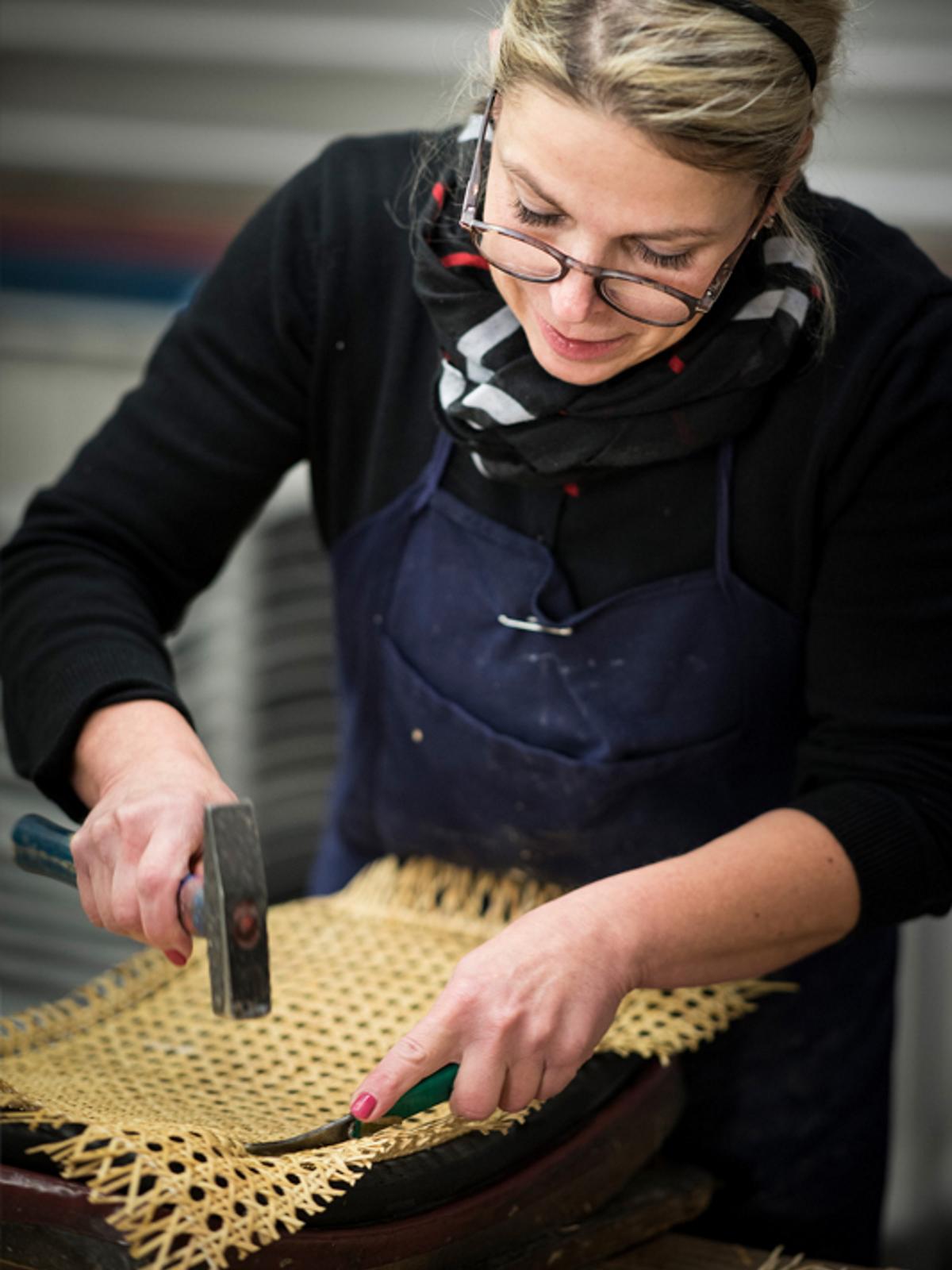
Thonet furniture - timeless and environmentally friendly

Environmental goals play a major role at Thonet
Apart from the company founder Michael Thonet and his sons, who designed numerous Thonet furniture objects in the early decades, the furniture manufacturer has worked with a large number of renowned designers throughout its history. Thanks to these collaborations Thonet has repeatedly succeeded in setting new standards and consolidating its position as a leading furniture design manufacturer.
In the 1930s Thonet was already the world's largest producer of tubular steel furniture, which was designed by some of the most important Modernist architects, including, Mart Stam, Marcel Breuer, Ludwig Mies van der Rohe or Le Corbusier. This furniture embodied the spirit of a new era characterized by rapidly advancing industrialization and innovative technologies. In addition to the tubular steel cantilever chairs, numerous tables also arose from this period - such as the B9 nesting tables or the iconic S 285 desk, both by Marcel Breuer.
Thonet represents the transition to the 21st century and the present day with designers such as Sebastian Herkner, Stefan Diez and Studio Irvine. The in-house Thonet design team also continually expands the portfolio with new furniture designs with designs such as the tubular steel secretary S 1200.
Both the Thonet design classics and the contemporary collections are characterised by their adaptability to different room concepts, which means they can be used in private living areas, commercial environments and anywhere where living and working merge.
Over time Thonet has expanded its traditional heritage to include a variety of contemporary furniture. From minimalist chairs to innovative tables, the newer Thonet models also combine functionality with high aesthetic standards. Thonet offers a comprehensive selection of chairs, stools, sofas and armchairs, as well as tables, shelves and collections of patio and garden furniture objects, all of which are complemented by accessories and lighting designs.
Thonet produces a wide range of furniture for furnishing entire living spaces with chairs, tables, sofas, armchairs, shelves and clothes racks. In addition to the Thonet classics, the manufacturer offer a variety of contemporary designs that refer to the materials, shapes and manufacturing processes of the Thonet classics and thus give them a contemporary look. These include, for example, the dining room chair 118/118 M by Sebastian Herkner, or the LUM table lamp made from a single piece of bent tubular steel by Ulf Möller. The Thonet upholstered furniture such as the bentwood sofa 2002/C002 also cleverly references the Thonet heritage and thus forms the ideal complement to the Thonet classics.
Classics such as the S 43 cantilever chair can be coordinated in a variety of colours and materials to suit different environments, including, for example, co-working spaces, canteens or the home office. As the S 43 F with armrests the S 43 proves to be an elegant conference chair, while the S 43 DR with a rotating base frame also meets all the requirements for flexible working in the office. Thonet also continually produces innovative furniture designs that are perfectly tailored to the requirements of contemporary work spaces; whereby the focus is on flexibility, multifunctionality and interaction. The S-5000 sofa program, for example, is based on a construction principle that allows armrests and backrests or partitions to be integrated as privacy and noise protection. The sofas in the collection fit perfectly into lobbies and work contexts.
Thonet's success began with the Coffee House Chair No. 14. The elegant, simple, low-weight chair was mass-produced and could be dismantled into individual parts to save space and be transported in larger quantities. Even though Coffee House Chairs are no longer sent disassembled into individual parts, they are still perfect for furnishing restaurants, cafés, bars and hotels with style and comfort. In addition Bauhaus cantilever chairs like the S 43 are also popular and practical chairs for furnishing cafés and restaurants. Numerous bar stools, lounge furniture and upholstered dining chairs from Thonet are also suitable for the catering and hotel sectors and meet the highest demands in terms of style and comfort.
Another area of Thonet's production is seating for events with a high number of visitors, such as in churches or arenas. As they are easy to assemble and easy to store stackable chairs and folding tables from Thonet can be used multifunctionally, while with detailed solutions such as interactive seat numbers that can be displayed on ePaper displays in the backrest, Thonet is one of the leading manufacturers of innovative seating for the events sector.
...Take Jil Sander, for example, who teamed up with Thonet to give Marcel Breuer's famous cantilever chair an elegant new look – celebrated above all in Milan...
...The result is a collection of some 80 chairs at various locations throughout the Dessau Bauhaus building and in the foyer of the Bauhaus Museum Dessau; some 80 chairs composing a juxtaposition of licenced works through Knoll, Thonet and Tecta, including the B3 'Wassily' club chair by Marcel Breuer, the S533 R by Ludwig Mies van der Rohe or the D4 by Marcel Breuer, of plagiarisms of those licensed works, and also of alternative interpretations of those licensed works by furniture retail chains such as Ikea or XXXLutz and designers such as Jasper Morrison... The latter a question also posed by the inclusion in Mehr als echt (More than real) of the S 43 cantilever chair by Mart Stam through Thonet, a work without question of importance in context of the (hi)story of furniture and of Functionalist Modernism, but a work, as with all works of Stam, that has as much to do with Bauhaus as this blog...
...In addition Ferdinand Kramer realised numerous furniture projects in cooperation with Thonet, most famously arguably being his B403 bentwood chair, while in context of his tenure at Frankfurt University Ferdinand Kramer designed, pretty much, all the furniture and furnishings... This process, which today is particularly important, is not only historically interesting: it alone explains the immense sales of the Thonet industry, and provides a very interesting reference for the further development of rationalisation in the furniture industry...